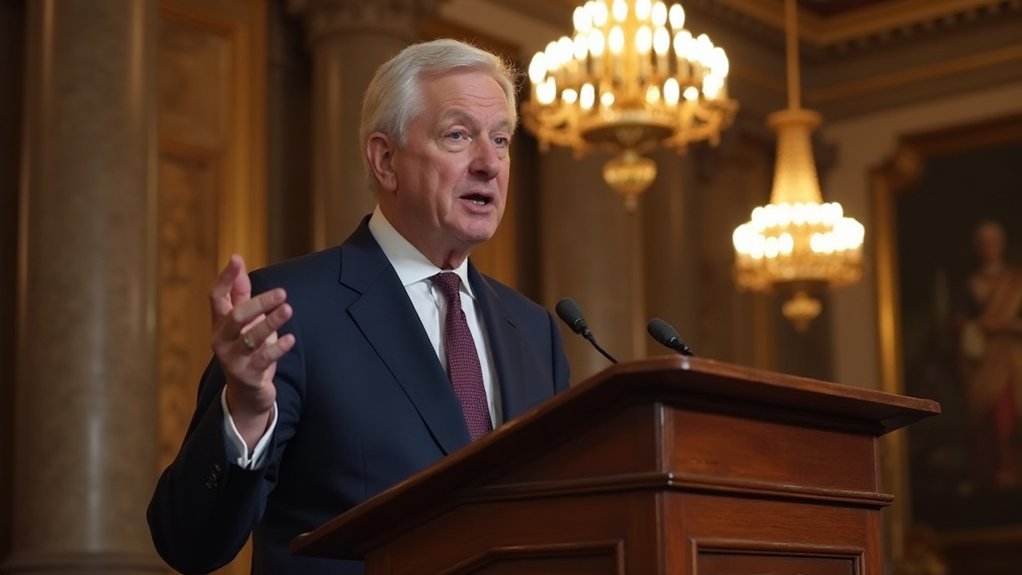While the cryptocurrency world continues its relentless march toward mainstream adoption, Bank of England Governor Andrew Bailey has delivered a pointed warning that should give traditional financial institutions pause: banks should resist the temptation to issue their own stablecoins.
Bailey’s cautionary stance reflects mounting global concerns about stablecoins’ potential to destabilize the financial system—a rather inconvenient truth for an asset class supposedly designed to provide stability. The governor’s primary concern centers on systemic risks that could emerge from widespread stablecoin adoption, particularly when traditional banks enter the fray with their own digital currencies pegged to fiat money.
The risks Bailey identifies are hardly theoretical. Stablecoins could facilitate illicit financial activities while simultaneously threatening lending practices and broader financial stability.
Perhaps most alarmingly, these supposedly stable assets remain vulnerable to collapse, potentially triggering fire-sales of underlying assets that could cascade through interconnected financial markets.
Instead of embracing stablecoin issuance, Bailey advocates for tokenized deposits—a more conservative approach that digitizes traditional money without introducing the systemic vulnerabilities inherent in stablecoins. This alternative allows financial institutions to innovate within existing regulatory frameworks while maintaining the stability that central banks prize above all else.
The global regulatory landscape presents a fascinating study in contrasts. While Bailey urges caution, the United States has shown considerably more enthusiasm for stablecoins, viewing them as potential tools to strengthen the dollar’s position as the world’s reserve currency. Meanwhile, Chinese authorities have issued warnings against illegal fundraising using stablecoins as part of their broader crackdown on cryptocurrency activities.
This divergence underscores the complex geopolitical dimensions of digital currency regulation, where financial innovation intersects with monetary sovereignty.
The implications for financial markets remain profound. Unregulated stablecoins could introduce unprecedented volatility—ironic, given their nomenclature—while regulatory challenges multiply as authorities struggle to balance innovation with stability.
Banks and financial institutions face a delicate calculus: pursue potentially lucrative stablecoin ventures or heed Bailey’s warning about threats to institutional integrity. Without comprehensive regulation, stablecoin holders face risks of issuer bankruptcy without government backstop, leaving them as unsecured creditors with potentially limited recovery options.
Bailey’s intervention highlights a fundamental tension within modern finance: the desire to embrace technological innovation while preserving the stability that underpins public trust.
As global coordination on stablecoin regulation remains elusive, his warning serves as a sobering reminder that not all financial innovations deserve immediate adoption.






